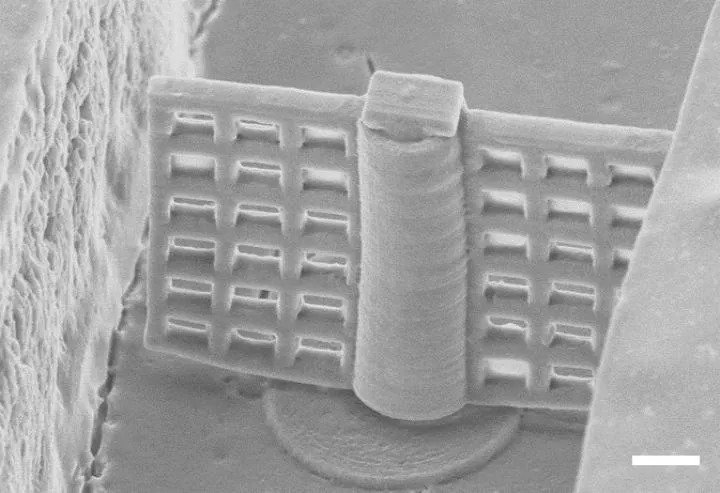Microfluidic devices are already small, which is why they’re so often 3D printed, but the particles suspended in the fluids that go in them are way smaller. Lots of chemical and biological processes involve filtering certain particles out of a solution, and making those filters can be difficult when you’re dealing with something as small as microfluidic channels. So a team of researchers from Hefei University of Technology and RIKEN Center for Advanced Photonics in Japan had the brilliant idea to 3D print a magnetic rotary microfilter that can be remotely turned on and off.

“By changing the direction of the external magnetic field, the microfilter we made can be remotely manipulated on demand to either filter certain-sized particles or to allow them all to pass. This functionality could be used for many types of chemical and biological studies performed in lab-on-a-chip devices, and importantly, makes it possible for the chips to be reused.” – Dong Wu, member of the research team from the University of Science and Technology of China
The team took some magnetic nanoparticles and mixed them into photopolymer resin, and then using two-photon polymerization they printed the rotary microfilter, making it magnetic. And since it’s magnetic, it can be manipulated wirelessly with a magnetic field from outside of the microfluidic device; keeping such devices sealed is incredibly important, otherwise the research samples could become contaminated, so minimizing wires coming out is a good way to maintain a seal. Simply rotating the magnetic field 90° will activate or deactivate the filter.
The microfilter was tested on an alcohol solution containing polystyrene particles that were 8 microns and 2.5 microns in diameter. Chenchu Zhang, a university member of the team, explains how it passed with flying colors, “It was clear that particles smaller than the pore size easily passed through microfilter while bigger ones were filtered out. When in passing mode, any larger particles captured by the filter were washed away with the fluid, which prevents filter clogging and allows reuse of the microfilter.” That means they can use the filter to pull certain sized particles out of a solution, turn it sideways and run a flush through it to rinse off the captured particles, and then reuse the filter.
Pharmaceutical scientists and medical researchers will be able to use these inexpensive 3D printed microfilters in their 3D printed microfluidic devices, making their work all the more effective. Chaowei Wang from the University of Science and Technology of China describes some of the potential directions this technology could go: “This filter could eventually be used to sort cells of different sizes for applications such as isolating circulating tumor cells for analysis or detecting abnormally large cells that may indicate disease. With further development it might even be possible to use it in devices placed inside the body for cancer detection.”










